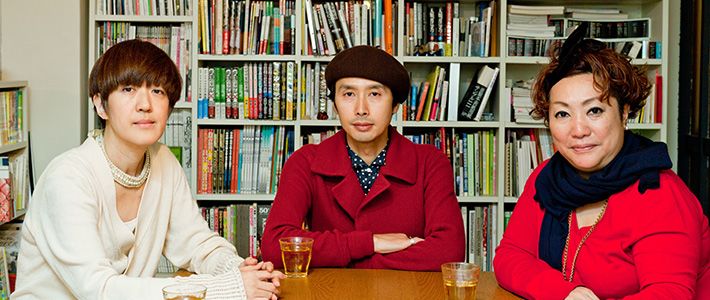
Opening Up Japanese Fashion
Society Culture- English
- 日本語
- 简体字
- 繁體字
- Français
- Español
- العربية
- Русский
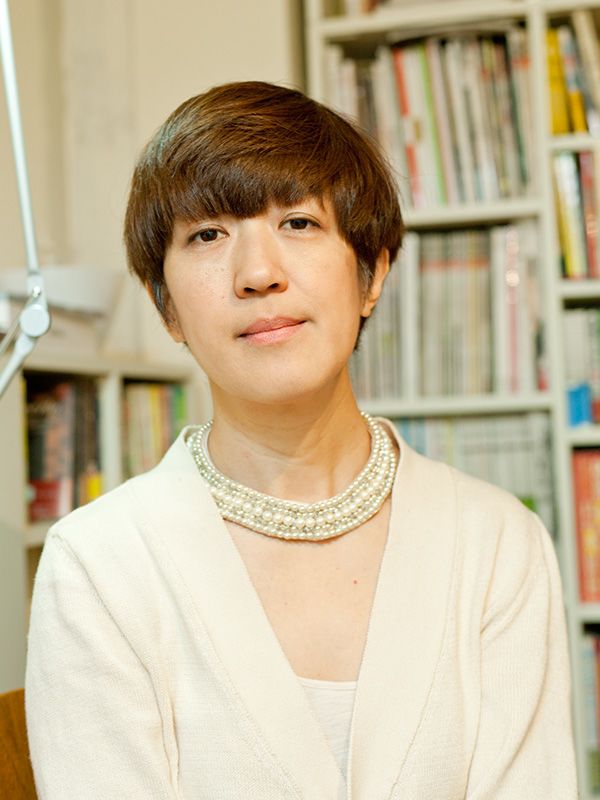
Nakashima Toshiko
Became editor-in-chief of the renewed Ginza magazine in April 2011, following posts as editor-in-chief of the culture and lifetyle magazine Brutus and as assistant editor-in-chief of Relax. She has proven herself a formidable force in creating fashion magazines whose scope includes art and subculture.
http://magazineworld.jp/ginza/
NAKASHIMA TOSHIKO Most of my work until now has been for magazines with a strong cultural slant, but my first direct experience with Japanese women’s fashion came when I started working for Ginza, which was renewed in April 2011. While I can’t deny having felt that Japanese fashion magazines are only relevant within the fashion industry, at Ginza I’d like to present fashion as one aspect of the world to women who want to follow the latest happenings in various fields and who have an interest in topics like music, art, film, and design.
YUYAMA REIKO At one time, fashion was certainly something that anyone who followed the art world had to be in touch with, wasn’t it? In the new-wave era of the 1980s, fashion, music, and culture were all closely connected, but since the 1990s, fashion has diverged. Today thoughts that support a love of clothes are few and far between, and people only think of clothing as a minimal form of personal maintainance or something that’s sufficient if they look like most other people. The creative side of dress seems limited to things like cosplay. What I think after teaching at university for six years is that young people today don’t want to express their individuality or present themselves as different in any way. The trend is to follow the crowd. They stop themselves from having any sort of competitive spirit. They don’t have any desire to look better than the person next to them.
AONO KEN’ICHI That’s right. They want to be part of the silent majority.
Fashion that Plays it Safe
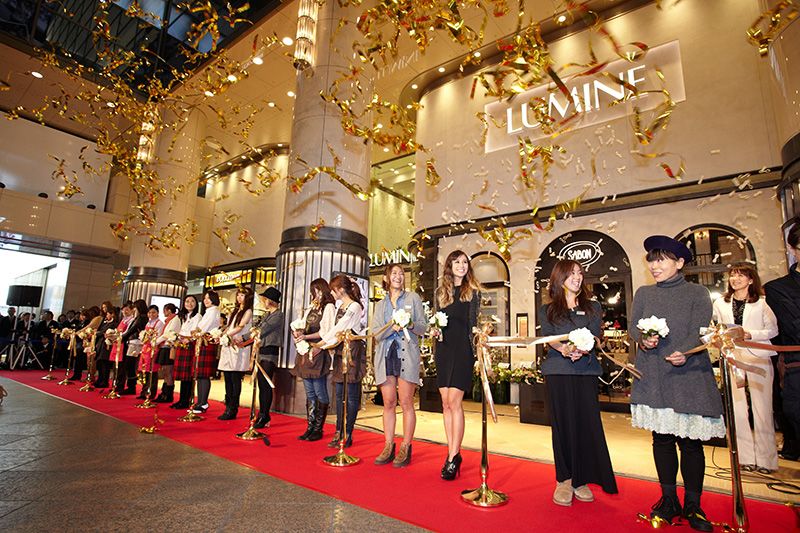 Lumine Yūrakucho
Lumine Yūrakucho
Opened on October 28, 2011, inside Yūrakucho Marion, a large-scale shopping and entertainment complex. The shopping center, aimed at consumers in their late twenties and thirties, houses 107 shops selling clothing, cosmetics, miscellaneous items, and foodstuffs. Attracting attention as Yūrakucho’s newest hotspot, the facility racked up sales of ¥450 million and welcomed roughly 200,000 customers during its opening three days.
NAKASHIMA Everyone is afraid of being picked on, right? It’s better not to stand out. They go through life trying not to get singled out.
AONO Speaking from the perspective of the seller, we have to treat that kind of quiet customer carefully. It’s quite a difficult time now to promote something as individualistic. At a specialty store, even if you bring in a variety of brands, they have to have a similar thread of some kind; basically, nothing can stick out too much. I think that’s the hard thing for specialty shops right now.
NAKASHIMA In that regard, the Lumine complex in Tokyo’s Yūrakucho district, which opened at the end of October 2011, has all the bases covered. The selection of items in the “volume zone”—the price range most attractive to average shoppers—is tremendous. Both Lumine and the individual shops in the complex seem to have really done their homework to provide what the majority of today’s Japanese consumers want. The stores that set up shop there are responding directly to customer demand, and they see satisfactory performance since they attract so many shoppers. But the shops that aren’t major chains will tend to be left out of that kind of big fashion building. Then it gets pretty boring, I think.
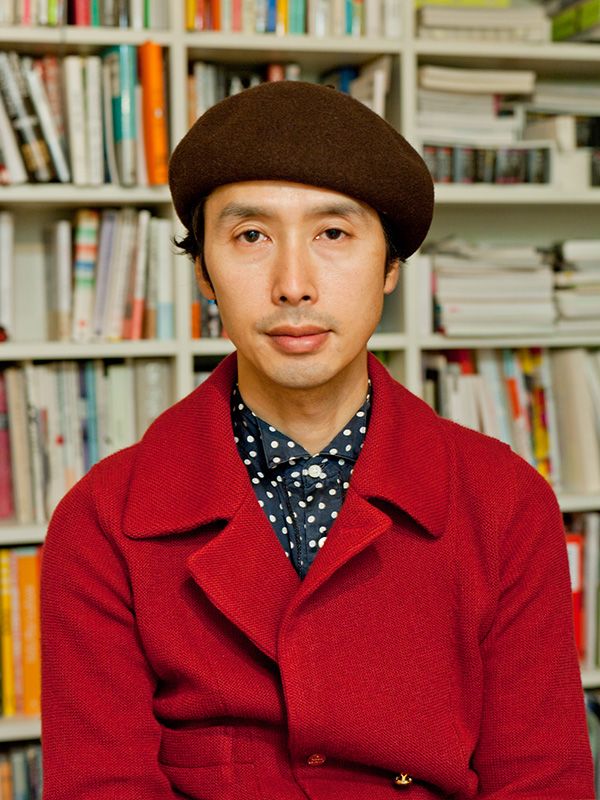
Aono Ken’ichi
Born in Tokyo in 1968. Creative director for the specialty store Beams, which operates a chain of 100 shops in Japan and abroad. In addition to working as director of Beams Records, he is active as a DJ and magazine columnist. In 2010 he published a collection of works entitled Meikyū yuki (Headed for the Labyrinth).
http://www.beams.co.jp/
AONO That’s the way it has to be, if you think of it as a place that attracts businesses. For the majority of people today, commercialized fashion is fashion. Any designers or retailers outside that framework have to find a different path. You know, there are still small brands out there involved in interesting, individual work that unites the essence of fashion with art and music. In comparison, brands presented during Tokyo Fashion Week tend to show only limited overlap between the commercial and artistic, although they aren’t strictly one or the other. In this way, the various groups of people who make clothing have been drifting apart from one another.
NAKASHIMA People working in the world of fashion aren’t connected with one another. Tokyo Fashion Week exists basically as a system to diffuse the products of Paris Fashion Week, and as such, it’s easily disconnected with reality. It feels quite different from what Tokyo is actually all about.
AONO It’s not like the old days, when there was a hierarchy in fashion. At the top were the trendsetters, below them the trend chasers, and below them the masses. That structure doesn’t exist anymore, and it’s unreasonable to think of running a shop with that mentality.
NAKASHIMA Nowadays, since people tend to communicate mainly through online social networks, there’s no way for fashion to be spread by influencers as it was in the past. When my magazine Ginza recently conducted a retail survey to find out what’s selling right now, we ended up with a surprisingly long list of items. We heard about boots from an unknown brand, costing as much as 100,000 yen, which sold out in one day. These weren’t anything we’d ever introduced in the magazine. Influencers don’t know about these things any more.
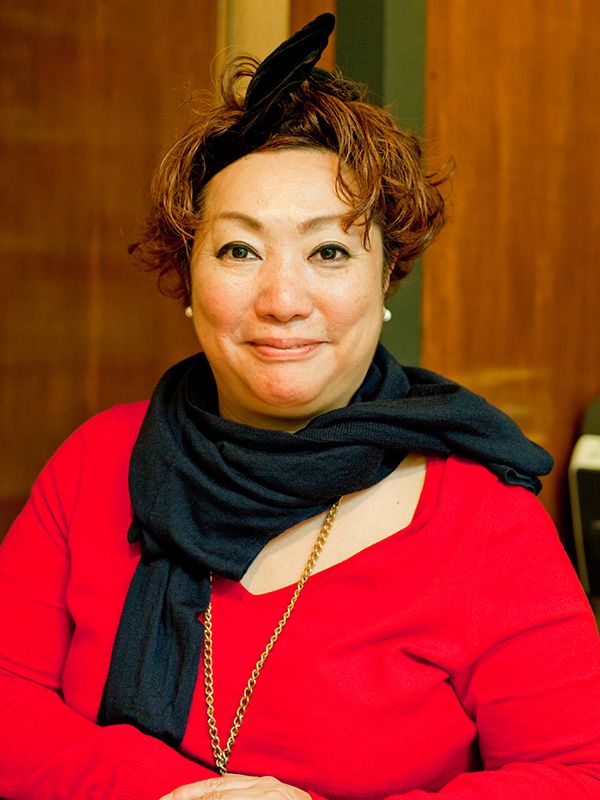
Yuyama Reiko
Former editor turned writer. Her publications include Onna hitori sushi (Sushi for the Woman Dining Alone), Josō suru onna (Women Dressed as Women), and Yosoji goe! (Crossing the Forty-Year Mark). She is also a part-time instructor at the Nihon University College of Art, a producer of club-culture events, and an enthusiastic speaker on subjects from film and music to food culture and fashion.
http://yuyamareiko.typepad.jp/
YUYAMA I’d like to know exactly why a product sells. It’s common for people to choose a certain item because some celebrity is wearing it, of course. But not everyone has the looks of a celebrity, and I think that in the past people gave more thought to how things would work best in their personal look. “I’ve got a fairly long torso,” one woman might think, and she’d think about that: she’d become more knowledgeable and figure out her own best style. But recently I get the strong impression that fashion is borrowed. Fashion as a means of self-expression is no longer seen. This is because it’s no longer a necessary part of young people’s lives.
AONO They want to be the same. Together.
YUYAMA Instead of asserting their individuality and standing out, they choose safety and harmony. They think that their dress code is at first glance unique because it represents whatever group they belong to, but within the group everyone is the same.
AONO There are of course some people who consciously differentiate themselves from the group, or who don’t have anything to do with it in the first place, but probably the majority decide what to wear based on what “seems to be good.”
NAKASHIMA They don’t like dressing up. They like the semblance of being dressed up.
AONO It’s really about not wanting to be thought of as a bad dresser. It’s not that they want to be cool—they don’t want to be considered uncool. For example, there’s a banner on the popular 2channel online discussion board that says, “I’m going to a matchmaking party tomorrow. What should I wear?” Then there’s a page full of all sorts of information, like a store where you can go to get a complete outfit for 10,000 yen. It’s not about somebody wanting to look cool. It’s about the guy who wants help shopping. Maybe the motivation to buy clothes is no longer a dimension of fashion anymore.
YUYAMA They’re aiming pretty low, aren’t they? [Laughs]
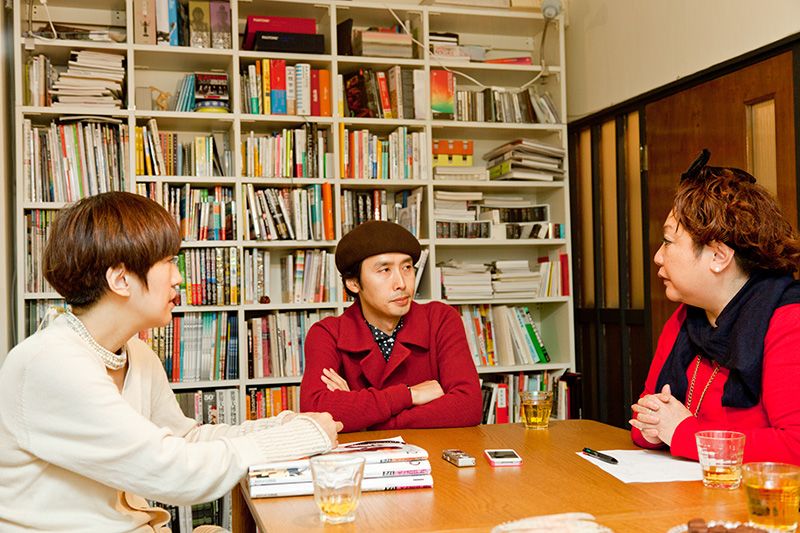 NAKASHIMA The essence of fashion is supposed to be individuality and bringing out what’s inside a person, but now it’s all about the “collective consciousness.” We’re not talking about members of an obsessive subculture like otaku, but about regular young people, even those who like fashion, who post questions on 2channel like, “I bought this from such-and-such a shop. How would you wear it?” Someone might respond, “I wear it with this item,” and the person who posted the question then responds with thanks. What’s more, a lot of the time it’s guys who are doing this.
NAKASHIMA The essence of fashion is supposed to be individuality and bringing out what’s inside a person, but now it’s all about the “collective consciousness.” We’re not talking about members of an obsessive subculture like otaku, but about regular young people, even those who like fashion, who post questions on 2channel like, “I bought this from such-and-such a shop. How would you wear it?” Someone might respond, “I wear it with this item,” and the person who posted the question then responds with thanks. What’s more, a lot of the time it’s guys who are doing this.
YUYAMA Well, this focus on doing the “correct thing” is really strong even among the general public.
NAKASHIMA People are all pursuing this collective consciousness where things considered “wrong” or “embarrassing“ are to be ditched. They choose what’s “safe” instead.
AONO So young people today are clothing themselves in the collective consciousness.
YUYAMA This probably isn’t limited to Japan; it may be the way things are going in all developed, capitalist economies. People seek safety and security. Companies tighten their grip on operations, hedge their risks, and seek to prevent accidents as much as possible. That’s the way it goes, and there isn’t anything to be done about it. Fashion also follows this current. There’s no going back to the exciting good old days, is there?
Fleeing Men and Women Who Glare
NIPPON.COM So what does the future of fashion look like?
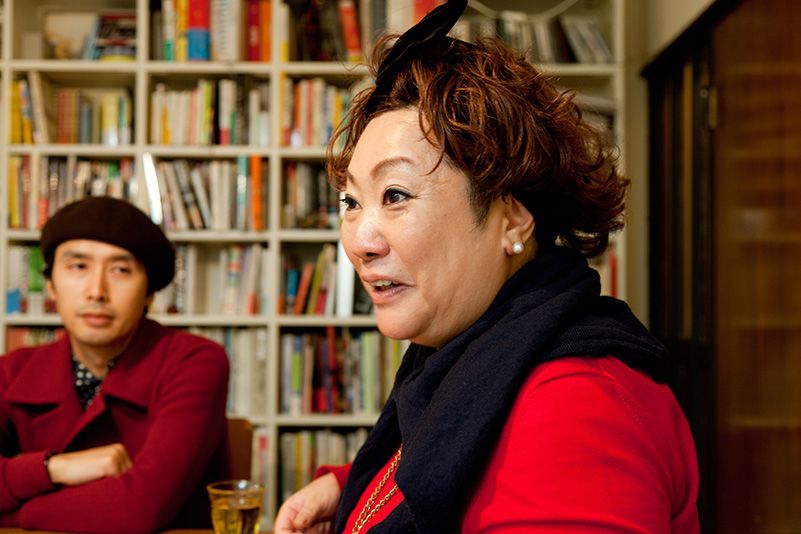 YUYAMA There are a lot of science fiction novels in which the physical body is safely stored and the brain sleeps, while real life is acted out by robots. I think maybe we’re getting closer to that sort of world. I get the feeling that cosplay is something like that: it’s not just the physical body but the whole person who is transformed into an all-new presence in a virtual world. We don’t put clothes on and enjoy fashion in the real world; we live in a fantasy world and enjoy acting out our life there. We may no longer need fashion, which was originally a tool to improve our image of ourselves and give us a new life.
YUYAMA There are a lot of science fiction novels in which the physical body is safely stored and the brain sleeps, while real life is acted out by robots. I think maybe we’re getting closer to that sort of world. I get the feeling that cosplay is something like that: it’s not just the physical body but the whole person who is transformed into an all-new presence in a virtual world. We don’t put clothes on and enjoy fashion in the real world; we live in a fantasy world and enjoy acting out our life there. We may no longer need fashion, which was originally a tool to improve our image of ourselves and give us a new life.
NAKASHIMA Fashion is the world of what some today call riajū: people who enjoy real-life [riaru] fulfillment [jūjitsu]. From their persiective, this is an outdated world, one disconnected from the Internet and unaware of the the most interesting features of the digital sphere.
YUYAMA Do you think Japan’s fashion industry should go in the opposite direction in the future, incorporating the cosplay feeling of the net society? Everyone gets involved in cosplay at the Comiket festival for otaku, held twice a year. Maybe the fashion players should put on an event like that. They should do that for Tokyo Fashion Week!
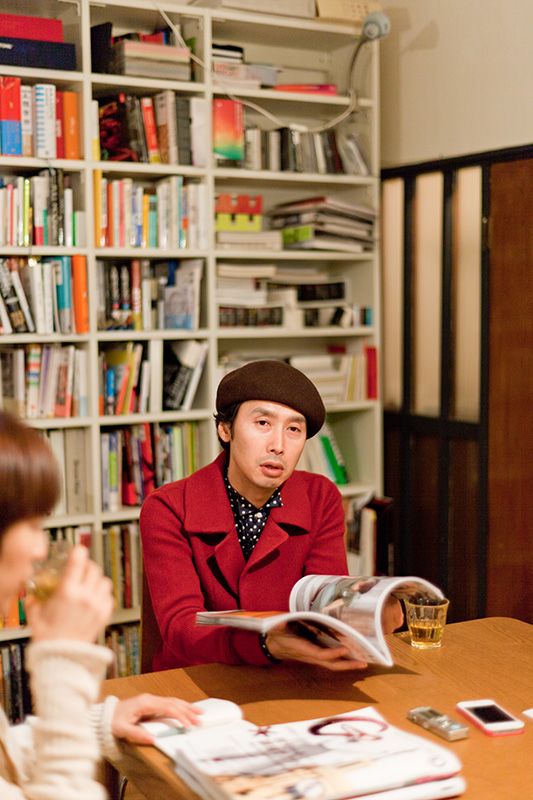 NAKASHIMA I think people still feel the need for a dichotomy of hare and ke—extraordinary occasions, like weddings or festivals, on the one hand and ordinary day-to-day activities on the other. In the past the Japanese never celebrated occasions like Halloween, but they’ve taken root thanks to this underlying friendliness to such special events.
NAKASHIMA I think people still feel the need for a dichotomy of hare and ke—extraordinary occasions, like weddings or festivals, on the one hand and ordinary day-to-day activities on the other. In the past the Japanese never celebrated occasions like Halloween, but they’ve taken root thanks to this underlying friendliness to such special events.
AONO I wonder if perhaps this sense of hare and ke in life is disappearing for people who have nothing to do with cosplay or Halloween.
YUYAMA Life is becoming more and more casual, isn’t it? Even for some special hare occasions it’s considered acceptable to go without a suit jacket.
AONO Well, there are some people who don’t have special occasions in their life in the first place, so they don’t need clothes for such occasions.
NAKASHIMA Be that as it may, everybody chooses what clothes they are going to wear each day. Don’t you have clothes that you choose when you feel like you’re going to be a “winner” today?
YUYAMA Yes, that desire to be a winner has been a huge boon for fashion. But what should we do in this age, when there are so many guys who run away from women in real life? What if it gets to the point where a woman gets all dressed up but doesn’t get any looks from guys?
NIPPON.COM Are guys really running away like that?
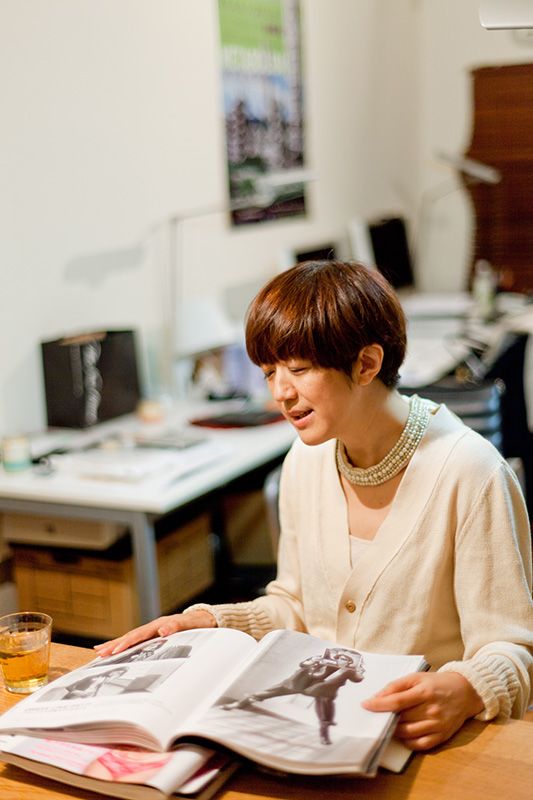 YUYAMA AND NAKASHIMA They sure are!
YUYAMA AND NAKASHIMA They sure are!
NAKASHIMA In 2011 a movie came out called Yubiwa o hametai (I Want to Wear a Ring) with this exact storyline. It’s about a sōshoku danshi—one of those “herbivorous men” who aren’t aggressive in romance—who can’t profess his love for a girl. We live in an age when it’s normal for a girl to confess to a boy that she likes him—or, if she isn’t ready to do that, to improve her technique for coaxing a reticent guy to confess his love. The whole idea is convincing a guy who’s until now only been in love with “two-dimensional girls,” like manga characters, to turn around and pay attention to your three-dimensional self.
YUYAMA It’s not only young guys. Men of all ages that are turning into grass-eaters. Look at guys in their fifties, for instance. Middle-aged men were much more energetic in the past! Nowadays it’s women in their forties and fifties who are the energetic ones, isn’t it? Women leading lives as bimajo, “beautiful sorceresses” wearing leopard-print clothes, doing their best to showcase themselves and their erotic sides. Women like this are creating one of the few bright stories in the fashion business today with the clothing they wear, including lingerie.
What Are the Japanese Looking for Now?
NIPPON.COM Do you think that Japanese people have a unique outlook on fashion?
YUYAMA Conceptually speaking, I think the Japanese have from long ago developed an ability to read the situation they find themselves in. With a single shared language, Japanese people understand one another even when the only words they exchange are utterances like “Ah, um.” As such, they use various signals to converse with each other. Their fashion, too, has many subtle codes that send signals to viewers. At least I get that feeling from certain people, like men who have a preference for vintage jeans.
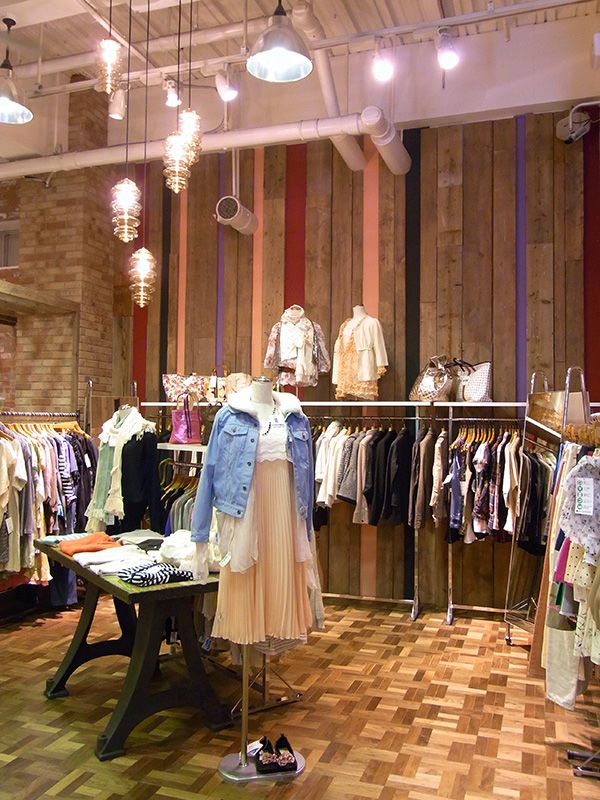
Ragtag Shibuya
Used clothing specialty chain with 14 stores located in major cities across Japan. The shops buy designer brand clothing and accessories from customers and resell the items after cleaning them. The chain also has an online store.
http://www.ragtag.jp/pc/
AONO It may be an approach similar to the culture of ink painting. You can express different visual aspects and produce beauty just by using shades of the color black. That’s a unique Japanese sense of beauty. Since the March 11 disaster Japan seems to have developed a mood that stresses the need for black-or-white clarity, but that doesn’t feel so natural to me. I think Japan originally had a rich palette of gray areas and a sense of beauty in which those subtle differences could be felt and appreciated. The pursuit of perfection in the art of cosplay embodies that.
YUYAMA In some areas, like negotiations on the Trans-Pacific Partnership Agreement, the government is trying to push forward in a “gray,” vaguely defined way. But yes, since 3/11 there’s been an almost obsessive thought among the Japanese people that their very lives are endangered by vague actions by their leaders. I think this attitude will influence fashion, too. When they become tired of trying to do everything in terms of black and white, then gray fashion will probably become popular again—although I suppose we could see the opposite, with fashion firmly taking one side or the other.
NAKASHIMA This idea of “concentration and selection” that continues to be touted among Japan’s economic strategies also comes into fashion I think. The concept called danshari has been huge in recent years. The three characters that make it up tell people to stop unneeded items from entering their lives, to discard the things they already own and no longer need, and to detach themselves from the desire for things in the first place. And it’s a big trend in the fashion industry as well. For example, shops like Ragtag are really trendy now. Since everyone is taking serious stock of their life, deciding what is and isn’t important to them, it’s become popular to go through your closet, get rid of what isn’t essential, and make very careful selections when purchasing new items. This trend has only grown stronger since 3/11.
YUYAMA The disaster was a catalyst, but even before that there was a tendency to dislike glitzy things. Consumerism was thought to be unattractive. Today we’re even seeing a complete consumption cycle through Internet auctions, with shoppers buying used items, selling them when they’re no longer needed, and buying things to replace them, all online.
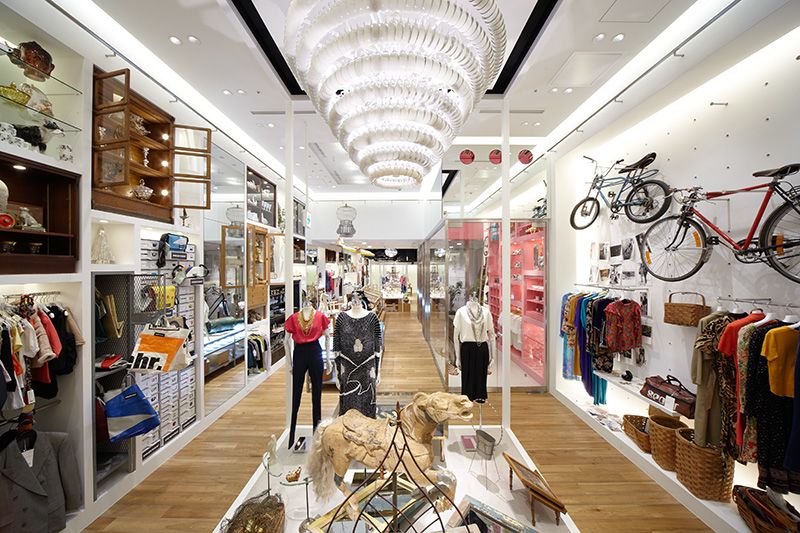
Pass the Baton Omotesandō
http://www.pass-the-baton.com
NAKASHIMA It seems that the idea that sharing is cool is starting to spread.
AONO Fashion is intrinsically difficult to share with others. This may be one thing keeping it from fitting in well with the current trends.
YUYAMA In this connection, I think that Pass the Baton is championing a really interesting concept. This shop positions clothing as antiques. When you make a purchase, you get something with a history from a stranger. You buy a story, and when you’re done with it in turn, you pass it on to the next person as “something borrowed from another age.”
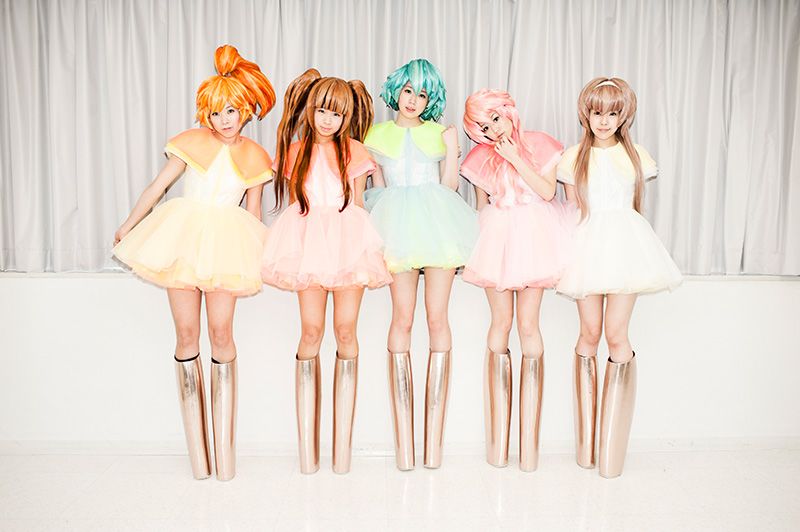 Dempagumi.inc, an all-girl group from the otaku district of Akihabara, appeared in Mikio Sakabe’s show during Tokyo Fashion Week.
Dempagumi.inc, an all-girl group from the otaku district of Akihabara, appeared in Mikio Sakabe’s show during Tokyo Fashion Week.
NIPPON.COM Earlier there was some discussion about Tokyo Fashion Week. Are there any designers or brands that merit attention for coming up with new movements?
NAKASHIMA When I look at the collections shown recently at Tokyo Fashion Week, I see a consciousness of real clothes and street wear coming through. At the most recent show for 2012 spring/summer, Yoshii Yūichi made a standout effort, organizing the fun “Versus Tokyo” event on the show’s last day. He brought together some interesting brands. We’re seeing something like a new breath of air coming into Tokyo Fashion Week to revitalize it.
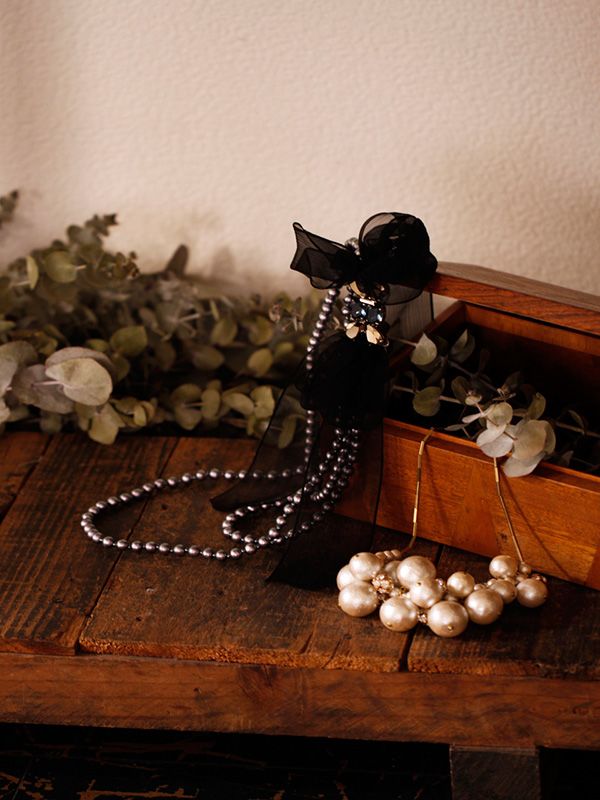
Petite Robe Noire
http://www.petiterobenoire.com
AONO I thought Mikio Sakabe did something interesting. Working with the girl group Dempagumi.inc, he brought fashion right to the edge of fantasy. There were some parts that really tickled the imagination. He approached it in a way that made me think there’s still room to enjoy fashion. Also, it’s not clothing, but the accessory brand Petite Robe Noire has a strong global outlook and its craftsmanship is really solid. You can imagine from the accessories the clothes you would wear with them.
NAKASHIMA Facetasm caught my attention. The designer Ochiai Hiromichi used to work for the hardcore street brand NGAP. The up-and-coming designers that have backgrounds in culture and street life are definitely part of and recognized in the civilization of fashion. That’s one source of my hope for the young generation.
(Translated from a November 20, 2011, discussion in Japanese. Photographs by Igarashi Kazuharu. Planning and arrangment by Yata Yumiko.)
art culture fashion mode designer brand apparel Ginza publishing up-and-comers Nakashima Toshiko Yuyama Reiko Aono Ken’ichi Brutus Beams